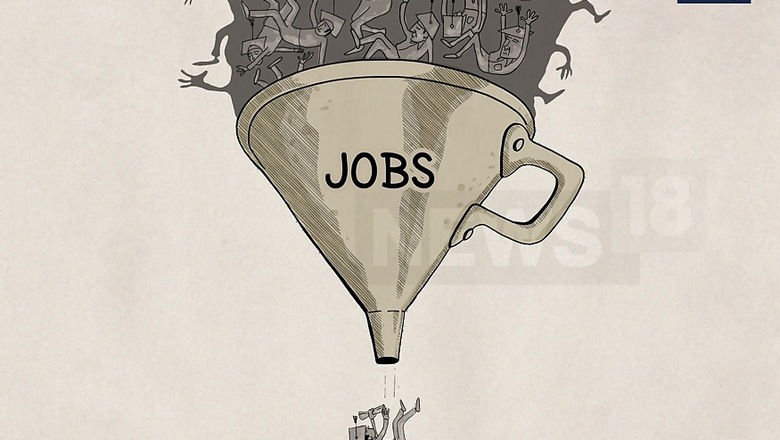
views
New Delhi: With India staring at worsening employment conditions, Mahesh Vyas, managing director and chief executive officer of Centre for Monitoring Indian Economy (CMIE) says the number of jobs can only go up if investments in modern industries are significantly increased.
"The investment climate has been very weak for many years now. This is the biggest problem," said Vyas.
As of now, Centre for Monitoring Indian Economy happens to be the only organisation to come up with a comprehensive unemployment data on India.
Speaking to News18, he also elaborated on the immediate needs for the Indian economy in terms of employment.
Edited Excerpts:
According to CMIE's Consumer Pyramids Household Survey, employment conditions have improved in India, what do you think are the plausible reasons? What exactly do we mean when we talk of employment conditions?
I do not know what you mean when you say that employment conditions have improved in India. In June 2018, the unemployment rate was 5.67 percent, which is higher than the 5.29 percent in May, which is not an improvement. The unemployment rate has been around 5-6 percent which is just about okay. But, the employment rate (40-41 percent) and the labour participation rate (42-43 percent) are too low. These need to improve to their levels of at least a couple of years ago before we can say that the employment conditions are improving.
What has not been working in India’s favour in terms of providing employment?
The investment climate has been very weak for many years now. This is the biggest problem.
Do you think the claim of jobless growth still holds? What can be done to mitigate it?
Growth has been largely jobless. Partly this is structural as people move out of agriculture in greater numbers than industry and services are able to absorb them. So, while the relatively more efficient industry and services sectors do absorb labour, since agriculture releases many more, the net result is jobless (or nearly jobless) growth. The solution is in greater investments into industry, infrastructure and modern services so that it can absorb a lot more of the labour released by the agricultural sector.
How has India fared in terms of jobs in the formal and informal sector in 2018 as of now in comparison to previous years?
Most of our jobs, about 80 percent of the jobs are in the informal sector. The government has provided some incentives for people to move formal jobs by funding contributions to the employee provident fund for the initial years of new employment. These could help. But, the real solution is in large-scale investments into modern industries that provide meaningful jobs, not just pizza or grocery delivery boys.
For upcoming job seekers, what are the sectors that maybe major job absorbers in the recent future?
Retail seems to be the greatest job absorber currently. The construction industry has a great potential as a jobs provider. Teaching has a large potential as well.
Do you think it is time India came up with monthly unemployment data? If CMIE could do it, what is stopping them, according to you?
CMIE is doing it. So, India does have a monthly unemployment rate data. In fact, a lot more than just an unemployment rate. It produces the labour participation rate, employment rate and provides these by gender, region, etc. If your question meant what stops the government from doing it, I think there is a need for change in the mindset. Government has done things in a particular way. There is a need to see things radically differently and possibly learn from others experiences or better still collaborate.
Is services-led growth still the way forward or are we seeing a slow shift?
India's has been a services-led growth. It will remain this way for a long time.
(This interview is part of News18's ongoing series #OnTheJob)



















Comments
0 comment